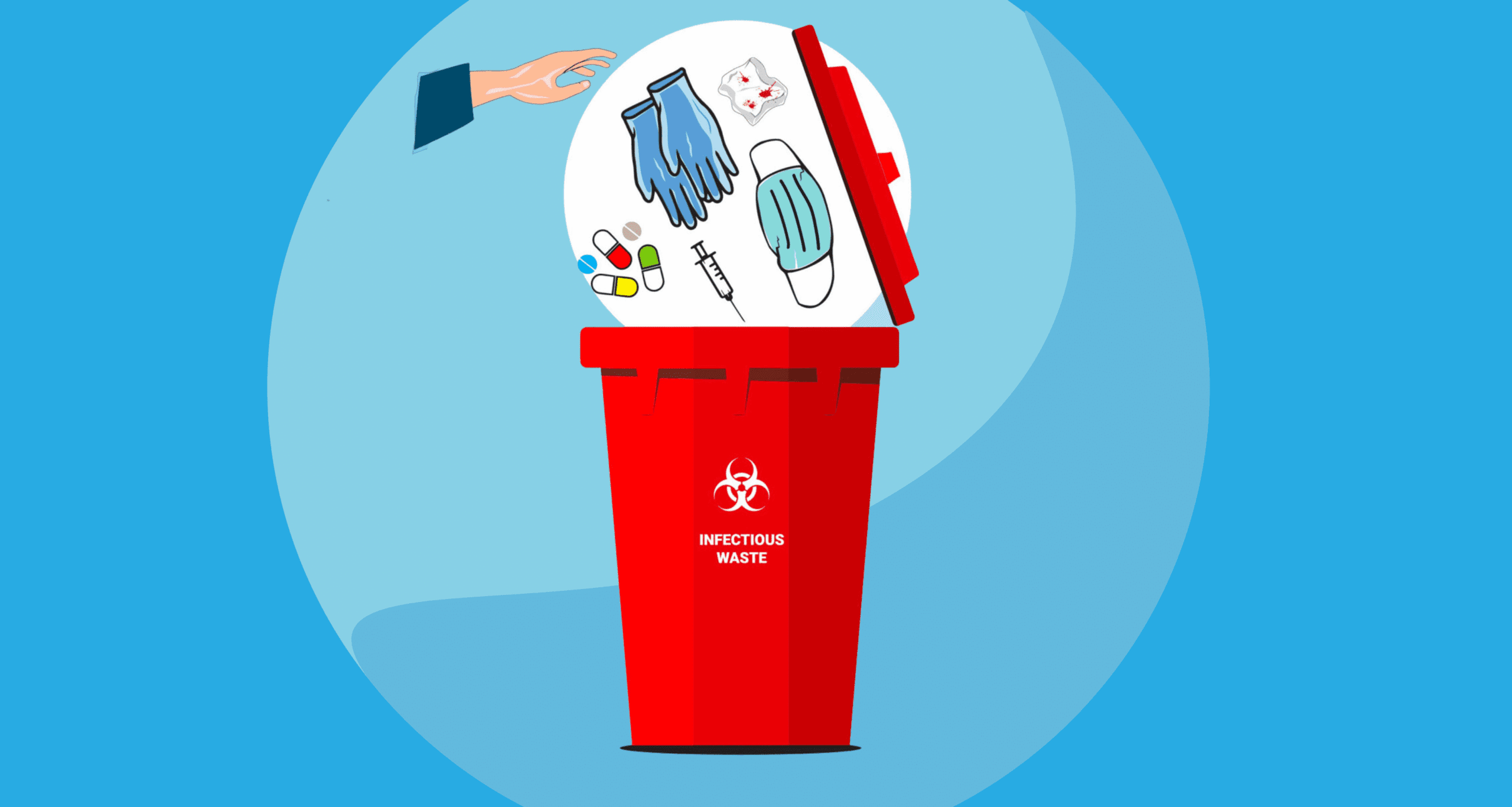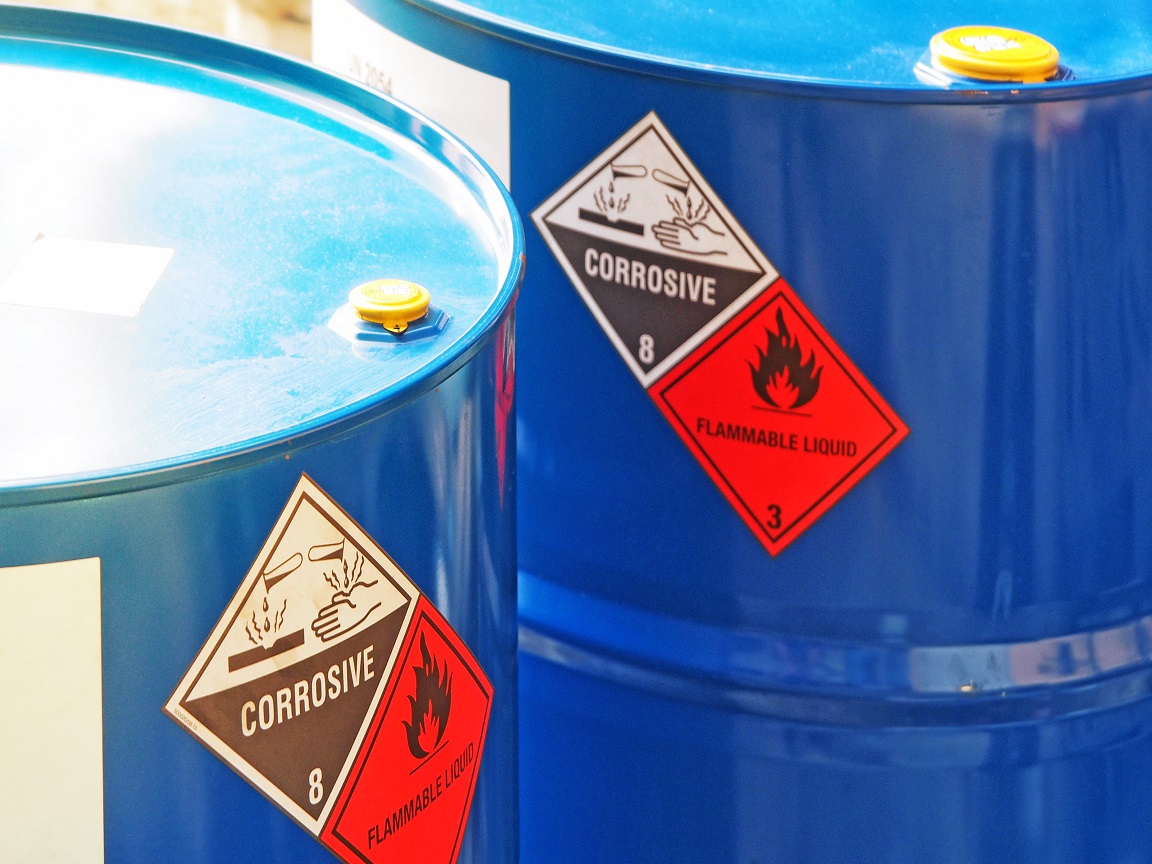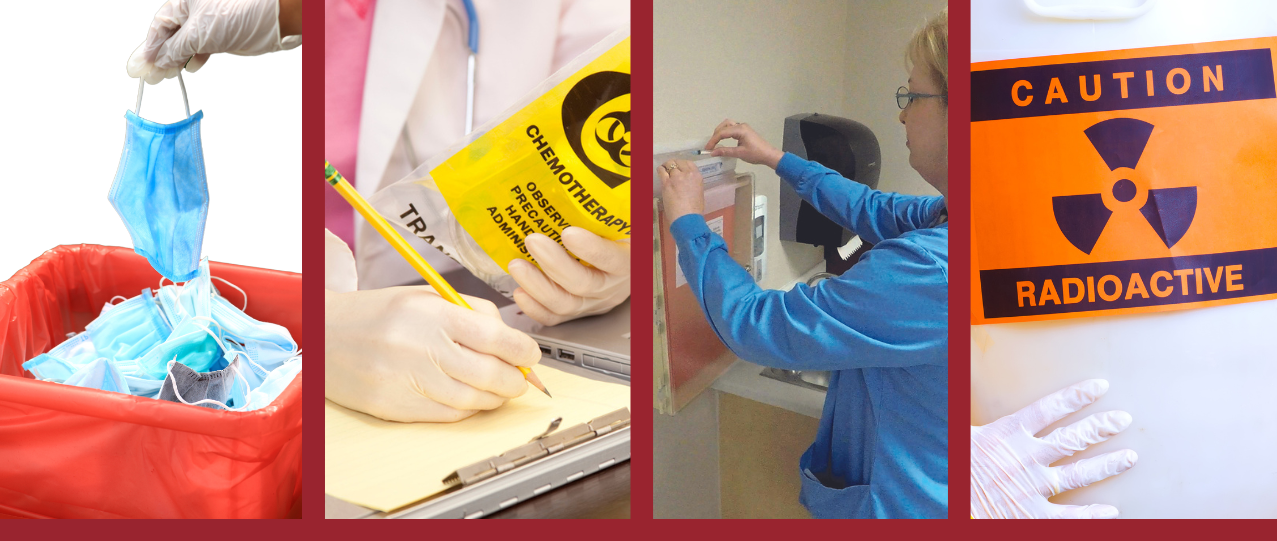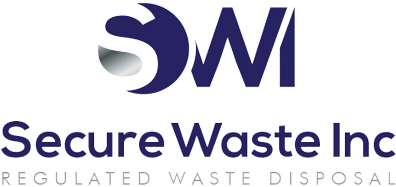What Is A Biohazard Waste Bin? Step By Step Guide From Secure Waste: Expert Solutions For Biohazard Waste Management
What exactly is a biohazard waste bin? This question is critical, and Secure Waste has delved into it with particular focus on the essential role these bins play in effectively managing medical waste. Biohazard bins are meticulously engineered to contain and securely dispose of hazardous materials that threaten public health and safety.
Secure Waste is committed to illuminating the different types of bins and containers utilized for biohazard waste, which range from streamlined medical waste boxes to robust, high-strength plastic tubs and include specialized sharps containers explicitly designed for the safe handling of sharp instruments.
Let’s explore the intricacies of biohazard waste bins and appreciate their pivotal role in ensuring safety and compliance within medical environments.
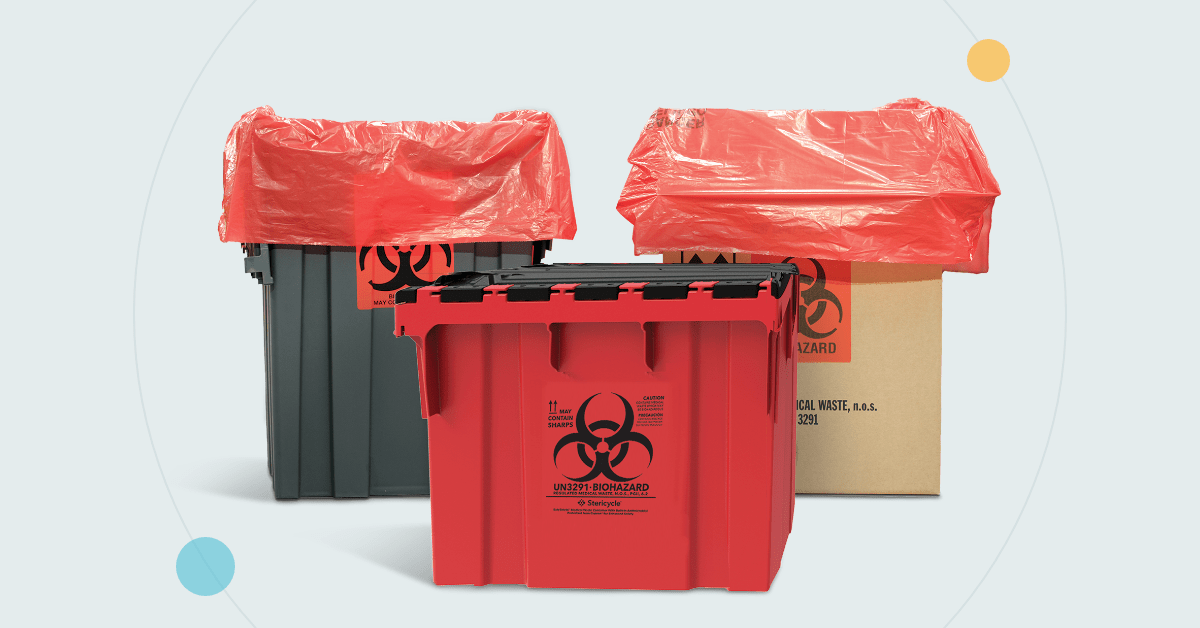
Are you a healthcare provider, perhaps a doctor or dentist, or maybe you operate a surgery center or a funeral home? If so, it’s crucial to recognize that you likely generate regulated medical waste.
Most offices that perform procedures or interact with patients will inevitably create and accumulate this type of medical waste. You may also handle sharp items that require careful disposal in a designated sharps container.
All sharps, along with what is categorized as loose or bulk biohazard waste, must be securely contained before being collected and disposed of by your medical waste disposal company.
This is where biohazard bins come into play. Secure Waste provides a comprehensive guide that walks you through the various containers available on the market, detailing their proper usage to ensure safe and compliant waste management. You uphold the highest safety standards for your practice and patients by correctly handling and disposing of medical waste.
Before we discuss a biohazard bin, why it is essential, and how to use it, let’s first clarify what biohazard waste is.
Biohazard waste refers to materials that pose a risk to human health or the environment due to contamination with pathogens, chemicals, or other hazardous substances.
Understanding this concept is crucial for proper waste management and ensuring safety in various settings, particularly healthcare and laboratory environments.
What Is Biohazard Waste? Everything You Need To Know.
Biohazard waste, often called infectious waste, encompasses materials tainted with potentially infectious agents, posing significant risks to human health and the environment.
This critical waste category includes various items, such as blood, bodily fluids, human cell lines, contaminated animal carcasses, and sharp objects like needles. Proper disposal of biohazardous waste cannot be overstated, as it is essential in preventing the spread of diseases and safeguarding public health. More information from the Occupational Safety and Health Administration (OSHA)
Here’s a more detailed exploration:
Biohazardous waste is any material that either contains or is contaminated by infectious agents or substances capable of causing disease. The handling and disposal of such materials require stringent protocols to mitigate risks.
Examples:
- Blood and Bodily Fluids: This includes not only whole blood and blood products but also a variety of bodily fluids such as saliva, urine, and other secretions that can harbor pathogens and infectious agents.
- Sharps: This category comprises all items that can puncture or cut the skin, including needles, syringes, scalpels, and broken glass. These objects pose a physical injury risk and can transmit infections if improperly handled.
- Pathological Waste: Biological materials such as tissues, organs, or body parts surgically excised or obtained during autopsy procedures. Pathological waste necessitates careful management due to its potential to carry infectious agents.
- Microbiological Waste: This consists of cultures, stocks, and laboratory specimens that may contain harmful microorganisms. Safely disposing of microbiological waste prevents laboratory-acquired infections and environmental contamination.
- Contaminated Animal Waste: Carcasses or bedding from animals infected with zoonotic pathogens—those transmittable to humans—fall into this category. Such waste requires special attention to ensure that diseases do not spread from animals to humans.
- Chemotherapeutic Waste: Items contaminated with chemotherapeutic agents used in cancer treatment must be disposed of with extreme care to prevent exposure to hazardous substances that could harm human health and the environment.
Effective management and disposal of biohazard waste are crucial in upholding public safety and health standards.
Having gained a clearer understanding of biohazard waste, discussing biohazard waste bins and their significance is essential.
These specialized bins play a crucial role in safely containing and disposing of hazardous materials, thereby protecting public health and the environment.
Let’s delve into how biohazard medical waste management works, particularly focusing on biohazard bins.
Suppose you work in healthcare and generate biohazard waste, such as used gauze with blood, medical gloves potentially contaminated with infectious materials (like those from dental procedures), or syringes and sutures used on patients with open wounds. In that case, you are coming into contact with potentially infectious waste.
Using A Biohazard Bin Explained
We can categorize this waste into bulk, loose, and sharps to streamline our understanding.
- Bulk Loose Waste: This category includes items such as soiled linens, dressings, and other medical waste that do not have sharp edges. All bulk loose biohazardous waste must be disposed of properly to prevent contamination and spreading infections. This type of waste should be placed into designated biohazard bins or boxes for later disposal by your medical waste management company. These bins must be marked and appropriately sealed to contain the waste safely.
- Sharps Waste: This includes needles, scalpel blades, and broken glass, which pose a significant risk of injury and infection. Using an approved sharps container specifically designed to be puncture-proof and leak-resistant is essential. While some might refer to these containers as biohazard bins, it’s important to differentiate that they are specifically for sharps disposal.
Once your sharps container is filled to the marked line indicating it’s full, you should seal it securely to prevent accidental exposure to the contents. This sealed container should be placed upright in your biohazard bin and handled carefully.
When your biohazard bin reaches capacity, scheduling a pickup with your hazardous waste management company is vital. Regular disposal keeps your facility safe, complies with health regulations, and minimizes environmental impact. Following these protocols ensures a responsible and secure approach to managing biohazard medical waste.
Let’s Review Some Biohazard Bin Examples

Remember that medical biohazard waste typically begins its journey right here in the exam room Lets ensure safety and proper disposal of all hazardous materials
The journey of biohazardous waste begins in various healthcare settings, such as examination rooms in small clinics, dental offices, or laboratories where blood is drawn.
Regardless of the specific location, biohazard waste is initially collected in small disposal receptacles designed to safely contain these materials.
Once these receptacles reach capacity, the waste is transferred to larger containers known as biohazard waste bins. These bins are then securely stored until they are picked up by a licensed biohazard disposal company for proper disposal.
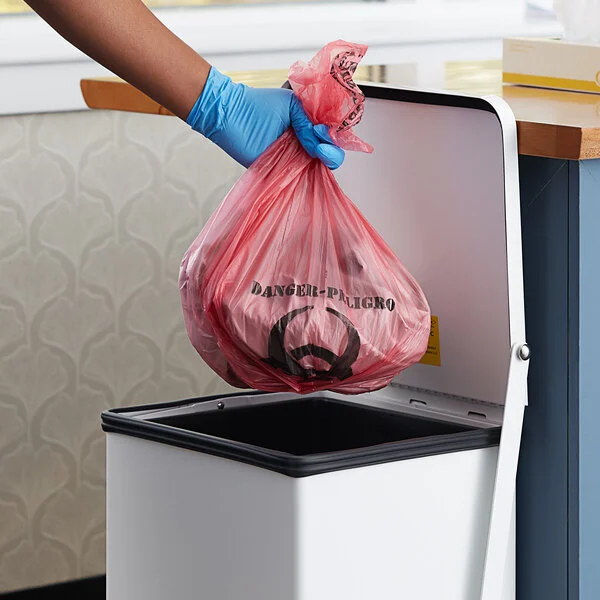
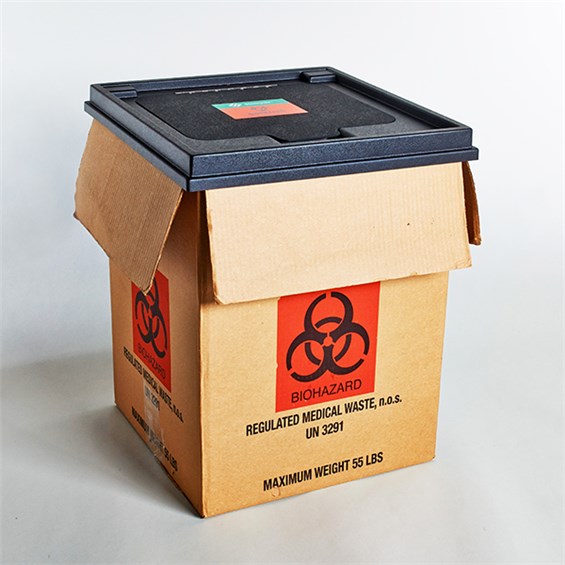
The standard biohazard waste bin, often called a medical waste box, is typically made of sturdy cardboard and weighs between 28 and 30 gallons. It is designed to safely dispose of regulated medical waste, including used needles in sharps containers and other potentially infectious materials.
Many disposal companies provide these boxes as part of their waste management services, and their use has been a fundamental aspect of regulated waste disposal since its inception. Traditionally, these cardboard boxes are utilized in various healthcare settings, including hospitals, clinics, and laboratories, allowing for the safe and efficient collection of hazardous waste.
However, in recent years, many companies have transitioned to using reusable tubs to dispose of medical waste. These tubs are often constructed from durable, easy-to-clean materials, improving handling and safety features. The shift to reusable options reflects an increasing emphasis on sustainability within the medical waste management industry.
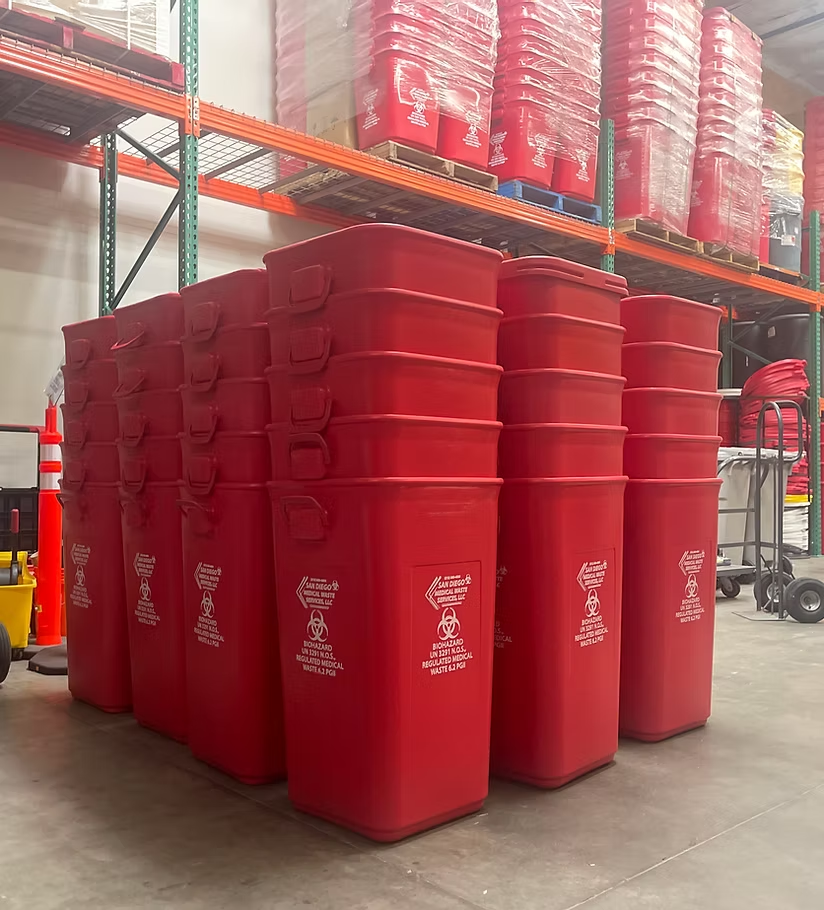
Biohazard Bin Reusable Tub: An Innovative Solution. Many disposal companies have recently shifted towards using reusable biohazard bins or tubs. While the initial investment may be higher, these containers can lead to significant cost savings for both customers and disposal companies over time.
Moreover, using reusable tubs is more environmentally friendly compared to traditional single-use biohazard waste boxes, which are typically discarded after one use. These tubs can serve multiple functions and be utilized hundreds of times, reducing waste.
It is important to note that while plastic biohazard bins require thorough cleaning between uses, even with a biohazard liner, this process is essential to ensure proper sanitation. Organizations can contribute to a more sustainable approach to biohazard waste management by maintaining these reusable tubs.

This is a large-capacity biohazard bin from Unifuse, a prominent provider of high-capacity containers. These biohazard bins are primarily utilized in high-volume environments such as hospitals and large surgical centers. They can also be found in long-term healthcare facilities and nursing homes, where proper waste disposal is crucial for maintaining safety and hygiene.

A biohazard sharps container, commonly referred to simply as a sharps container, plays a critical role in safely disposing of medical needles and other sharp objects. When discussing these containers, it is essential to recognize that they come in various sizes and types to accommodate different healthcare practices and volumes of waste. I think selecting the appropriate sharps container is crucial; please choose a size that aligns with your specific practice requirements and the amount of sharps waste generated.
Also, following any regulations or guidelines your infection control team sets is essential, as these may vary by facility. Compliance with OSHA safety standards is not just recommended but mandatory when selecting and utilizing sharps needle containers.
Once a container is full and securely sealed, many biohazard disposal companies permit the direct placement of these containers into larger biohazard waste bins for safe disposal. It’s important to note that most sharps containers are designed for single use only; however, reusable ones are available for larger healthcare facilities, such as hospitals, requiring higher capacity solutions. These reusable options can significantly reduce waste and ensure safety while maintaining compliance with health regulations.
In conclusion
Now that you have a more comprehensive understanding of biohazard disposal bin, don’t hesitate to contact Secure Waste.
We provide reliable, compliant, eco-friendly medical waste disposal solutions for your facility’s needs. We have expertise in biomedical, hazardous waste, and Sharps container disposal. In addition, we provide customized waste management plans, including secure collection and transport, and sustainable disposal practices.
Contact us today for a FREE Waste Assessment, or request a quote online!
**Disclaimer** This information is provided for reference purposes only and should not be considered as legal advice or factual information at the time of your reading. Regulations frequently change and can vary from state to state. We encourage you to contact your local regulatory authorities or Secure Waste directly for the most current information. Please note that Secure Waste is not liable, in part or in whole, for any information contained on this page or website.
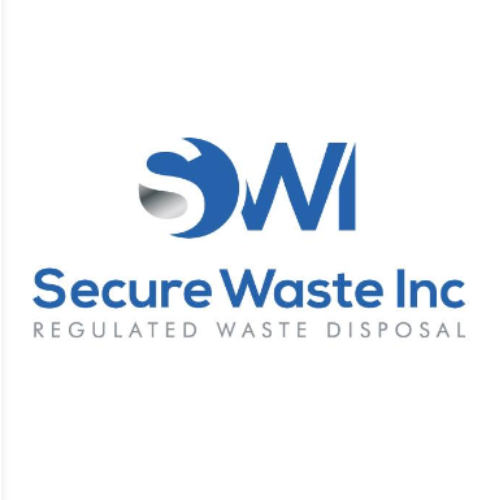
Expert Medical Waste Management: With over 25 years of industry experience, Secure Waste is a trusted local leader in hazardous and biohazardous waste disposal across Maryland, Virginia, and Washington, D.C. Specializing in medical waste management, sharps needle disposal, and biohazard waste removal, the company ensures full compliance with federal, state, and local regulations while prioritizing environmental sustainability.
The company also offers additional services, including secure document shredding and sharps container sales, providing comprehensive solutions for healthcare facilities and businesses. Our cost-effective services help clients maintain regulatory compliance without unexpected costs.
With a commitment to customer satisfaction, Secure Waste offers tailored waste management plans that align with industry best practices. Their team of experts provides reliable, timely, and compliant services, making them the preferred choice for medical waste disposal. For a free waste quote or more information, visit www.securewaste.net
